Continuing with some photos from eastern California…
After checking out the faulted moraine, but before heading up the hill to check out the indurated shear zone (which you can just see in the background of this photo), we stopped to check out this visually-striking outcrop:
Look at the glee on the faces of Kurt (green shirt) and Marcos (running; he’s so excited!). We were all pretty jazzed by this polka-dotted outcrop. But in spite of being titillated, we weren’t quite able to figure this thing out.
Here’s Jeff expressing his understanding of just what we’re looking at:
Wes Hildreth, our Bishop Tuff man from the USGS, takes a closer look:
So here’s an even closer look, with my pen for scale:
We’re looking at two main rock types: a dark colored one which is present in grapefruit- to basketball-sized chunks, most with high sphericity and round cross-sections, and a light-colored granite which was present between the dark orbs. There were some more angular dark chunks, too.
Our best bet was that these were xenoliths, stoped off the edges of the granitic magma chamber as it intruded, then piled up on the floor of the magma chamber. If you went “in” to this rock face by a few feet, the ‘xenoliths’ disappeared and you would be swimming in pure granite. The problem with the chamber-floor-debris-layer interpretation is that this “layer” of putative xenoliths was oriented subvertically. So if it represents the floor of an ancient magma chamber, then the whole pluton would have to be rotated by ~90° in order to produce this particular outcrop.
An alternative explanation is that the subvertical orientation of this layer of dark blobs was the wall of a magma chamber, and we’re looking at an outcrop face that was ~parallel to that wall. Probing fingers of granitic magma were working their way into the surrounding rock, perhaps thermally eroding it as they went, producing rounded shapes. Later, once everything had solidified, a fault developed through the transitional zone which divided pure pluton from pure wall rock, and gave us this dual-composition outcrop.
I think I prefer the xenolith interpretation, but to be honest, none of us were really sure what was going on here. We were all struck by the beautiful polka-dot pattern, but among this crew of 30 professional geologists, not one could say for sure just what the hell was going on with this outcrop.
…And I think that’s pretty cool.

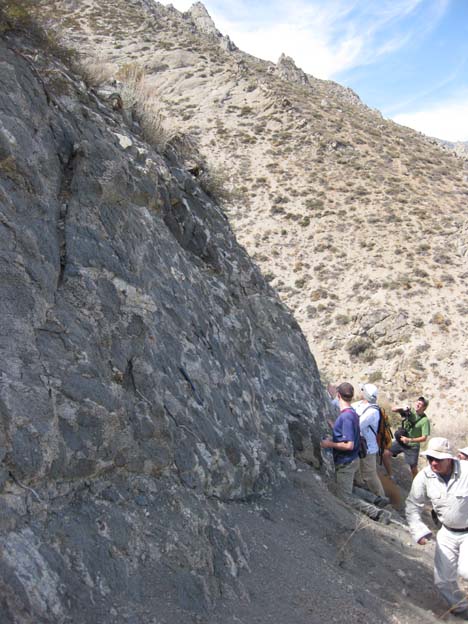
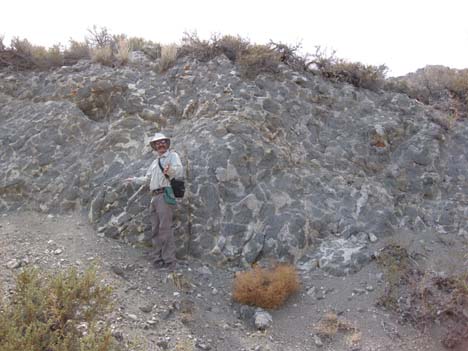
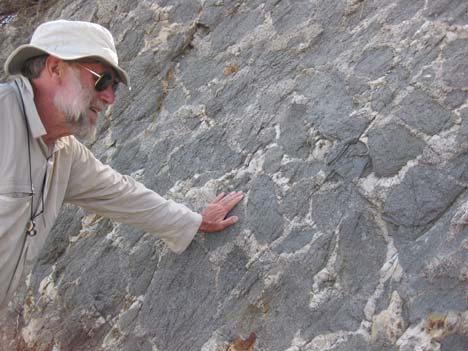
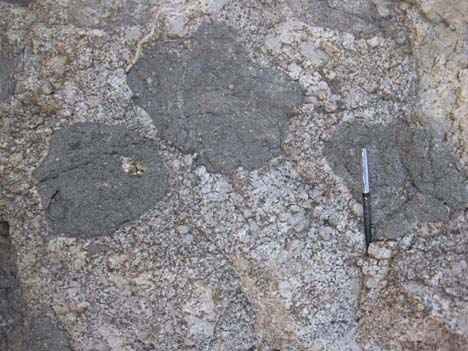
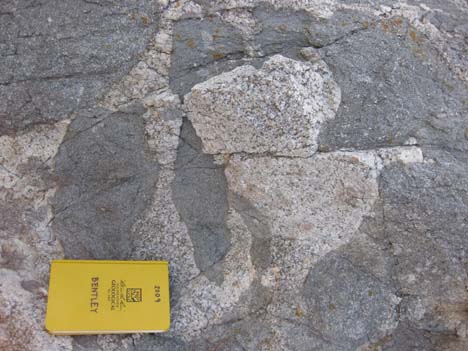
There are features similar to this around the Cadillac Mountain Granite in Acadia National Park. There, it’s interpreted as fracturing along the edge of the pluton as it intruded (the chinks of country rock are interpreted as the fractured margins of the magma chamber as the pluton intruded.) Photos at:
http://web.me.com/dooleyclan/Site_2/Blog/Entries/2009/5/12_Acadia_National_Park_-_Paleozoic_rocks_2.html
My first reaction was that it looks like a xenolith cumulate, but the stoping idea is intriguing.
Thanks for sharing! What a great resource and accessible even to a non-scientist such as I. I’m looking forward to following you, and if you are ever in the Portland area again, I hope you will let me know. I’d love to follow you around as you work the field and take pictures, if that’s something you’d consider.
Hi Eric,
No immediate plans to return to Portland, but I’m always up for going out in the field. I’ll let you know.
CB
i am indian geography hons stu. so. this type knowledge is helps me for grow